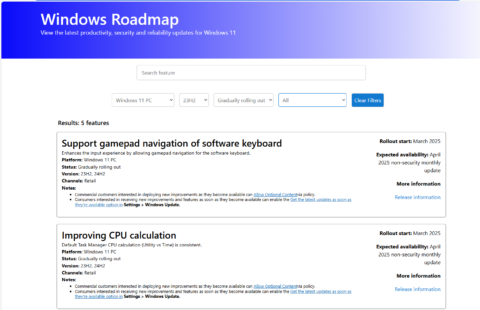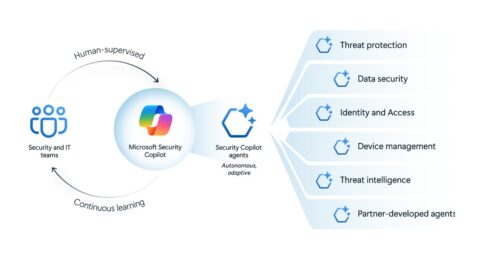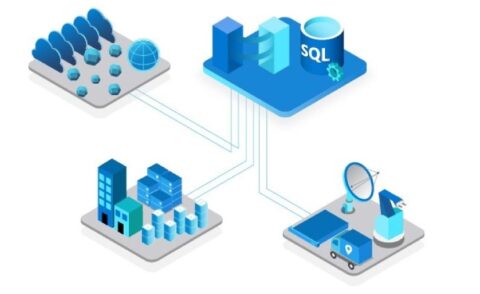Updated: July 12, 2024 (July 12, 2024)
BlogMicrosoft says the new Outlook for Windows is ready for GA. Is it?

Microsoft is pushing ahead with its plan to launch its new Outlook in a way that might be a bit more aggressive than many expected. On July 11, company officials posted to the Microsoft 365 Message Center an update on the timing for the rollout of the new Outlook. As of August 1, 2024, Microsoft plans to designate the new Outlook as generally available (GA) and no longer in public preview for commercial customers. (GA is not yet happening for Government Cloud, Department of Defense or Sovereign Cloud customers.)
The GA milestone is not going to have immediate impact, Microsoft is assuring organizations. The MC810420 entry says there will be “no automatic changes for current users.” Organizations will be able to control its availability and are “encouraged” to start planning for migration, since Microsoft will be offering full support for the product as of August 1. Microsoft’s note says the current Outlook Windows app, now called “classic Outlook,” will continue to be supported and available and “any Microsoft-driven migration steps in managed environments” will not happen without a 12-month notice.
Is it panic time?
Microsoft has been working on consolidating its Outlook mail and calendar client apps for Windows and the Web since 2021, if not longer. The planned replacement, which was formerly codenamed “Project Monarch,” looks and feels a lot like the current Outlook web client for Windows.
Microsoft officials have said the Mail and Calendar apps built into Windows 11 will be replaced with the new Outlook by the end of calendar 2024. But they’ve continued to claim that the new Outlook will remain an opt-in experience for other customers while it fills in gaps in the feature matrix.
Earlier this year, Microsoft officials said publicly that the next milestone on its roadmap would be GA for the new Outlook but did not provide a date when that would likely occur. Sometime after GA, Microsoft officials said, there will be an “opt-out” milestone, during which the new Outlook will be on by default, but customers can still roll back. The “cutover” stage, during which the switch back to classic Outlook will no longer be available for new deployments of Outlook from Microsoft 365 subscriptions, is slated for some time after that. During cutover, customers with perpetual (non-subscription) Office — specifically, Office 2021 and Office 2024, which is due later this year — will still be able to use classic Outlook.
“Microsoft’s next step is to hide the current Outlook and make the new one the default for Microsoft 365 Office users. We didn’t get the 12-month notice for that, so IT managers have at least that long before they have to either block new Outlook, wave it through, or let the user decide,” explained Directions on Microsoft analyst Rob Helm.
Based on Microsoft’s clues, Directions on Microsoft estimates that customers who license the Outlook Windows app with Microsoft 365 Apps for enterprise will have to adopt the new Outlook possibly as early as the second half of 2026.
No Exchange Server or COM support on the horizon
There remain a considerable number of features available in classic Outlook that are still missing or only partially implemented in currently circulating commercial previews. A major trouble spot is Exchange Server: Microsoft has not announced any plans to support it with new Outlook. Unless Microsoft relents (which is unlikely), on-premises and third-party hosters will not be able to host Exchange with the latest client.
Another problem is COM add-ins and related extension technologies including .NET add-ins (also called “VSTO” add-ins after the Visual Studio Tools for Office tool set), and Visual Basic for Applications (VBA) macros. Many of these were developed by Microsoft, partners, and some customers to integrate Outlook into other applications. Customers moving to new Outlook will have to do without or replace them with new JavaScript add-ins, some of which are already available for Salesforce and Microsoft customer relationship management (CRM) applications.
Additionally, some key, basic features aren’t slated to arrive until after GA. The initial version of PST support in the new Outlook for Windows isn’t slated to start rolling out until March 2025, according to Microsoft’s M365 Roadmap. Support for S/MIME is slated to start rolling out in September 2024.
Customers also need to be aware that the new Outlook will add new features through service-based flighting, not through build updates. “Features will be listed on the Microsoft 365 Roadmap, and then released into the Targeted Release ring for 30 days before beginning General Availability release,” Microsoft says.
“GA’s only direct impact on IT managers is that you can get support for new Outlook. However, we project new Outlook will permanently displace classic Outlook from Microsoft 365 Office suites in as little as 24 months after GA. So treat GA as a reminder: Get new Outlook rollout into your technology roadmaps and budgets,” advised Helm.
Related Resources
New Outlook to GA August 1, 2024
Microsoft’s Roadmap for the New Outlook
Microsoft to Support Classic Outlook for Windows for Some Until At Least 2029
New Outlook: Two Years to Breaking Changes in M365 (Directions members only)















